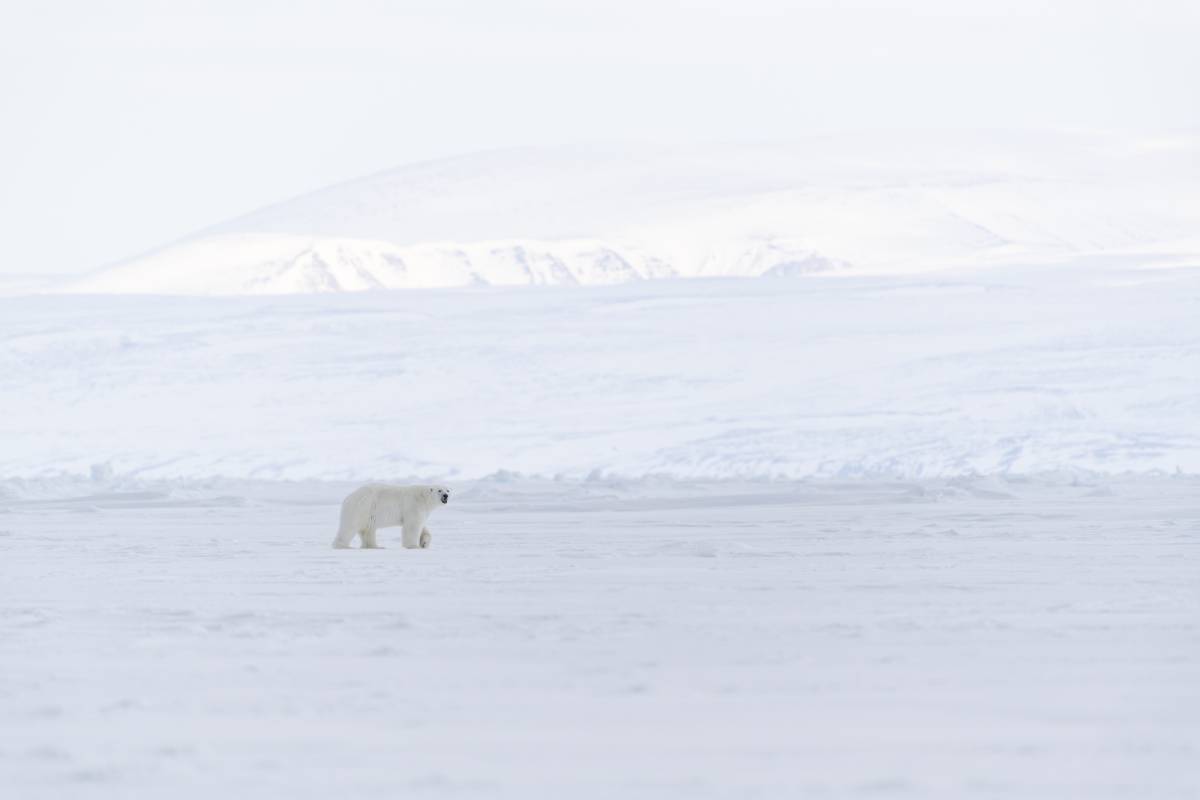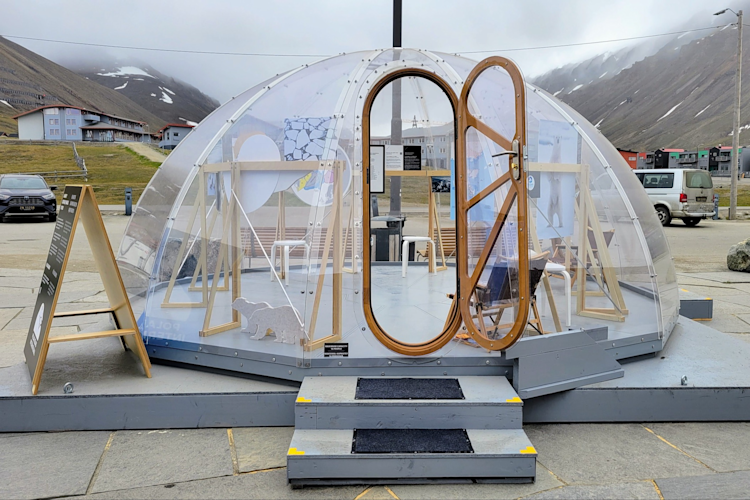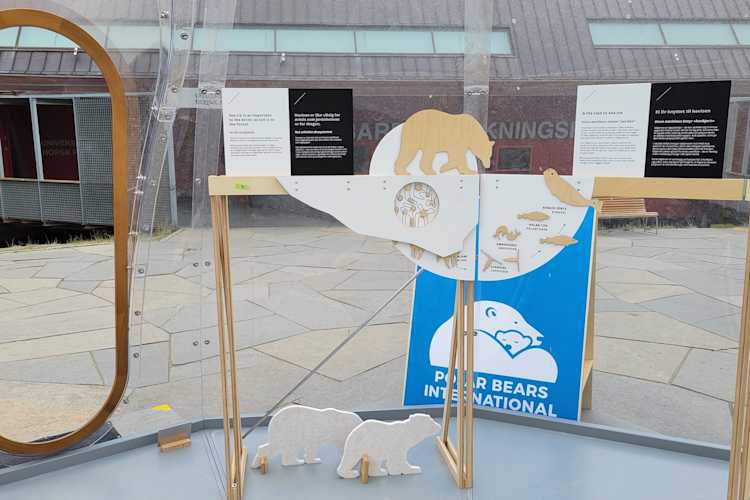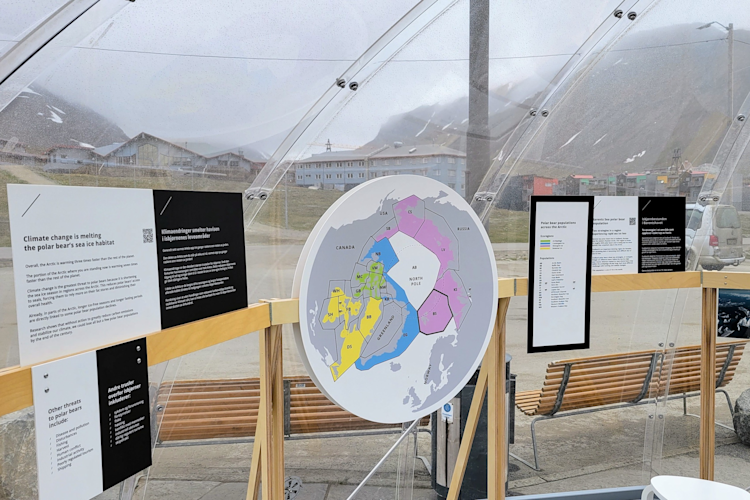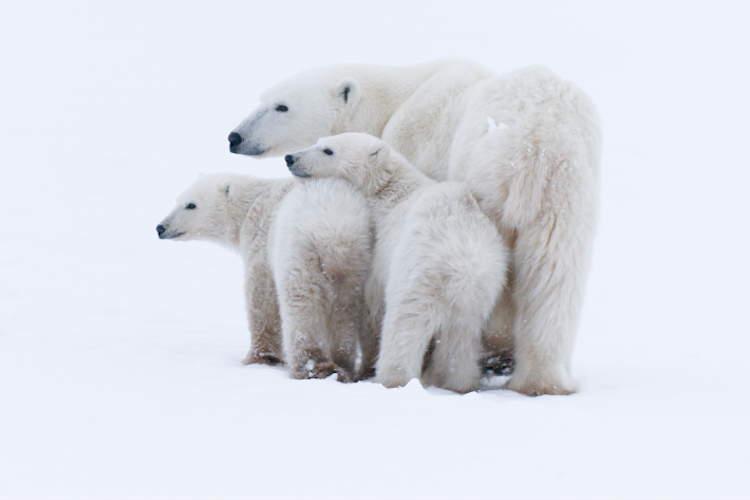Q: What was the outcome of the talks with the museum? How did they lead to the Ice House?
The Svalbard Museum was excited about the idea of a conservation component and more in-depth information about polar bears and climate change, so we teamed up on a temporary exhibit housed outside the museum in a portable clear dome. We’ve dubbed it the Polar Bears International Ice House. It has the distinction of being the most northern pop-up interpretive center in the world.
The idea for the dome came from one of our partners, Hilde Fålun Strøm of Hearts in the Ice. She lives in Longyearbyen and has a dome she showed us this past spring when we were there for our den study.
Once we decided to move forward, things came together quickly. Canada Goose, a generous sponsor for over 15 years, provided funding, and two board members, Dick and Val Beck, helped support the education display.
The exhibit is being installed in the dome as we speak, and we look forward to a five-week trial summer season this year in Longyearbyen. If it’s successful, we plan to regularly open the Ice House during the tourism season and ideally expand the number of weeks we are there.
Q: What does the Polar Bears International Ice House look like?
It’s a clear dome, shaped like an igloo, that can be moved or taken apart and stored, so when the summer season is over, we can save it for another time. The architectural firm we worked with, Lupien + Matteau, designed the interpretive display as an upside-down mobile that tells the story of polar bears, sea ice, and climate change in an engaging and dynamic way.
The exhibit provides an understanding of the Arctic food web, the Barents Sea polar bear population, the needs of moms and cubs, the impacts of climate change, and the need to take action—all in a small space. The messaging is very similar to that of Polar Bears International House, which Lupien + Matteau also designed, but it’s geared towards this location.
